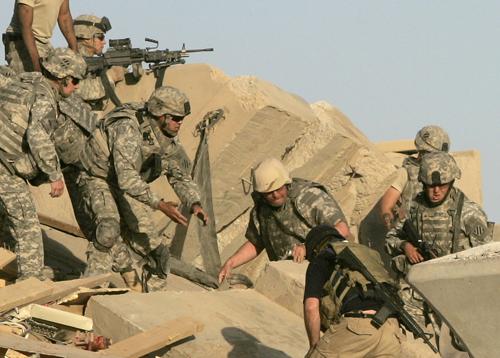Vehicle bomb destroys bridge

U.S. troops and private security guards, in black, work to remove concrete rubble from atop wounded soldiers, at a bridge destroyed by an apparent suicide vehicle bomber on Sunday, June 10, 2007, outside Mahmoudiya, about 30 kilometers (20 miles) south o The Associated Press
Jun 11, 2007
Last updated on May 12, 2016 at 12:21 p.m.
MAHMOUDIYA, Iraq – With a thunderous rumble and cloud of dust and smoke, an apparent suicide vehicle bomb brought down a section of a highway bridge south of Baghdad on Sunday, wounding several U.S. soldiers guarding the crossing and blocking traffic on Iraq’s main north-south artery.
There was no immediate U.S. Army confirmation on the number and severity of the casualties. An Iraqi civilian also was injured, said Donald Campbell, of the private security Armor Group International, who helped in the rescue.
Campbell and others in a passing Armor Group convoy worked with a U.S. Army quick reaction force for some 45 minutes to pull trapped men from the rubble, scrambling over the fallen concrete.
U.S. armored vehicles provided cover fire from their cannons after the bombing, which occurred in the area dubbed the “triangle of death” for its frequent Sunni insurgent attacks.
Get The Daily Illini in your inbox!
The blast dropped one of two sections of the “Checkpoint 20” bridge crossing over the north-south expressway, six miles east of Mahmoudiya.
It appeared that a northbound suicide driver stopped and detonated his vehicle beside a support pillar, said Lt. Col. Garry Bush, an Army munitions officer who was in the convoy, which also carried an Associated Press reporter and photographer and arrived two minutes after the blast.
The crossing was believed to have been closed to all but military traffic at the time.





